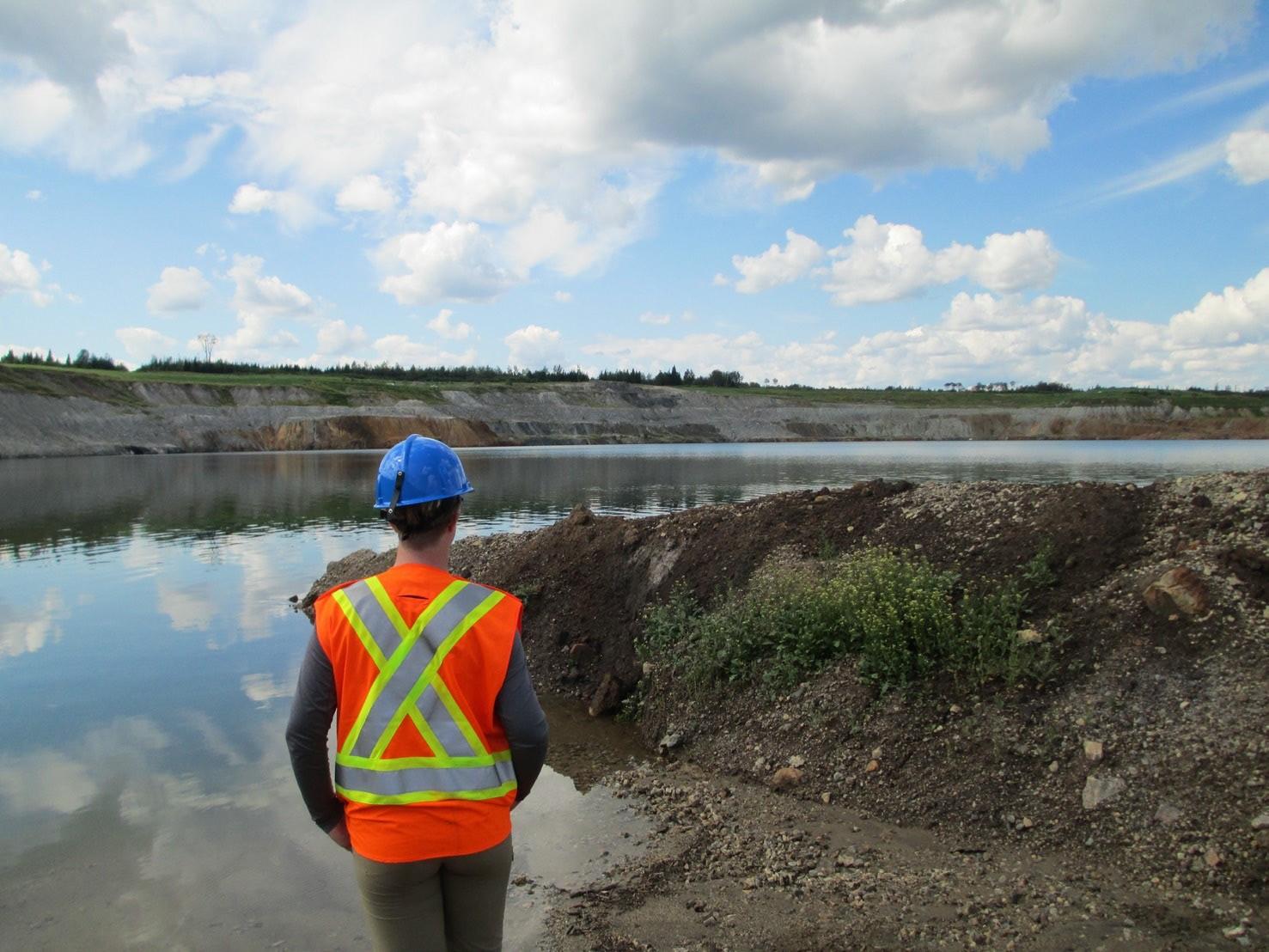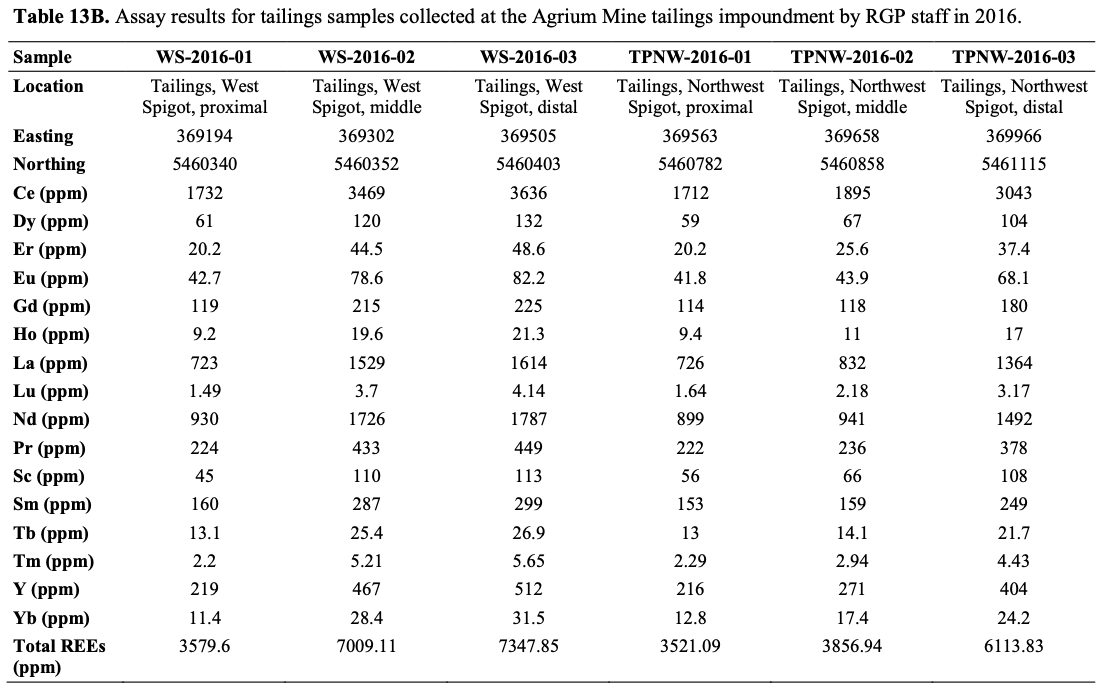
LOCATION AND ACCESS
The Cargill carbonatite complex is located 35 km southwest from the town of Kapuskasing. The mine site is located in the northwestern portion of Cargill Township, the southern portion of Cumming Township and the eastern portion of Ecclestone Township. An all-weather gravel road provides access to the former mine site. Agrium granted RGP staff permission to access the property, collect samples from the tailings dam and to publish the results (Kenneth Munnoch, written communication, January 24, 2018).
PREVIOUS WORK
The Agrium Mine (MDI42G07SW00004, Ontario Geological Survey 2017) exploited the residuum of the Cargill carbonatite. The Cargill carbonatite is an intrusion with an outer rim of pyroxenite that hosts minor copper-nickel mineralization and a carbonatite core made of calcitic, dolomitic and sideritic phases (Sage 1988). During the Cretaceous, the core was weathered and formed an apatite-rich residuum by dissolving the carbonate minerals and leaving weather-resistant minerals, such as apatite, in place (Sage 1988). The Agrium Mine was in operation from 1999 to 2013, producing a phosphate concentrate. The site is currently being rehabilitated (Photo 3).
GEOLOGY
Although the residuum on the Cargill carbonatite was mined for its apatite content, 38 other minerals, including monazite, dahlite, collophane, crandallite, deltaite and gorceixite, which incorporate REEs, were also present in the residuum (van Hees, Sirbescu and Shelton 2001). The REE-bearing minerals had gone through the apatite concentration process at the mine site, and presumably separated, so that they ended up being deposited with the tailings in the dam.
In 2016, samples of the tailings were collected by RGP staff. The samples were collected along a straight line between the highest (at a spigot point) and lowest point on the dam (near the pond). For each of the 2 lines, a sample was collected at a spigot (proximal), midway to the collection pond (middle) and near the standing water in the collection pond (distal, Figure 9). Results for these samples are reported in Table 13B.
SUMMARY
The tailings have a high concentration of REEs, especially light REEs (LREE), such as lanthanum (La – 1131 ppm average.), cerium (Ce – 2581 ppm average) and neodymium (Nd – 7775 ppm average), consistent with typical LREE-enrichment in carbonatites. The total REEs averages 0.52 wt% and varies from 0.35 to 0.73wt% for the 6 samples collected on site. There is an increase in the concentration of all elements, in all samples, as the distance from the spigot increases. This trend indicates that the REEs are probably travelling with fine-grained and lighter particles in the tailings. The REEs might occur either incorporated in, or adsorbed onto, clays and other residuum minerals that were not concentrated with the apatite and ended up in the tailings dam.
It is estimated that 12.6 Mt of tailings are stored at the Agrium mine site (Kenneth Munnoch, Agrium Inc., personal communication, January 24, 2018). Assuming that the tailings contain an average of 0.5 wt% total REEs and 0.1295 wt% Nd, it would mean that there are approxiately 63 000 t and 16 300 t of total REEs and Nd, respectively, contained in the tailings. The neodymium has a value in excess of US$1.08B (US$57,150 per t Nd2O3 – China Domestic Price, February 2018). This sampling initiative demonstrates the REE potential of both processed and in-situ, carbonatitic rocks.
If a preliminary economic evaluation indicates that extracting the REEs might be viable, additional studies should focus on the feasibility of extracting the REE from the tailings (and possibly any remaining carbonatitic ore). The studies that should be considered include (1) a micrometallurgical study to provide a preliminary indication as to the extractability of the REEs; (2) establishing the concentration of Nd and total REEs in the tailings dam using detailed drilling and sampling; (3) calculating the total number of tonnes of Nd and total REEs in the tailings dam using the analytical results; and (4) conducting full-scale metallurgical testing to determine if the REEs can be readily extracted.
Timmins District, 2017


